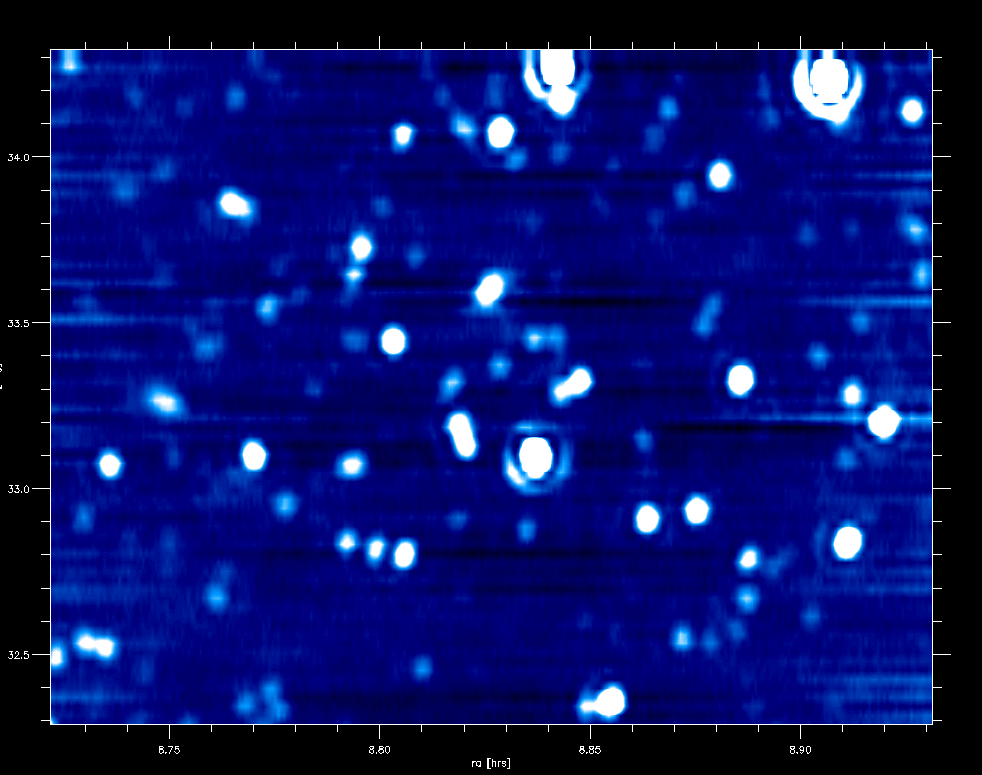
| The program takes advantage of the fact that the ratio of low mass to high mass halos in numerical simulations appears to be the same in high and low density regions. Square-degree sized fields are mapped, centered on known galaxy groups for which primary distance indicators give distances between 3 and 10 Mpc. Maps of this size will inevitably include a large number of continuum sources (as can be seen in the map of the NGC 2683 region shown in the Figure below), which provide a challenge in the data reduction process. The strategy for observing mode varies as a function of the target group's distance. The more distant groups required 12 (or more) seconds of integration per beam in order to achieve the required HI mass limit. Therefore, observations of those areas were made in drift mode. Groups at nearer distances were observed using OTF mapping, with a slew rate set so as to reach the mass limit (3 seconds per beam in the fastest case). Preliminary results suggest that short integration time OTF mapping, in which the telescope is driven at a rate up to half the maximum slew speed, results in data quality which is indistinguishable from data that was taken in drift mode. That is, the channel-to-channel rms is the same in both cases, and no long period oscillations are introduced by the fast slew rate. Preliminary quantitative results were presented by Kristine Spekkens at the Extragalactic ALFA workshop held at Arecibo in March (see: http://alfa.naic.edu/extragal/meeting1/minutes/ALFALFAsprouts.html). |

|
These observations represent just the first step in a larger HI mapping project, with more surveys planned for use with ALFA, with the goal of achieving survey coverage across the entire (Arecibo) sky. On-going work involves experimentation with the best methods to perform bandpass calibration and subtraction, continuum cleaning, beam characterization and deconvolution, noise characterization, and HI signal detection and extraction.